THE SECURE ACT 2.0 - BIGGER AND BETTER THAN THE FIRST VERSION!
The SECURE (Setting Every Community Up for Retirement Enhancement) Act 2.0 became law in late December 2022. The new retirement related provisions in this legislation follow-up and build on the original SECURE Act of 2019. See our synopsis of the SECURE Act of 2019 here) The SECURE Act 2.0 creates more flexibility and accessibility for retirement savings and financial plans with dozens of new provisions. This article highlights only those specific provisions which are most relevant to our cross border clients.
SIGNIFICANT CHANGES TO REQUIRED MINIMUM DISTRIBUTIONS
Threshold Age For RMDs Raised
The threshold age, which determines when individuals must begin taking Required Minimum Distributions (RMDs) from IRAs (Individual Retirement Accounts), increases from 72 to 73. This provision is effective on January 1, 2023 and allows for an additional year to delay mandatory withdrawals resulting in an extra year of tax shelter. Now, the first RMD can be delayed until April 1 of the year following the year the individual turns age 73. Then from that point on, RMDs must be taken in each subsequent year by December 31.
Note that if you turned age 72 in 2022 or earlier, you will need to continue taking RMDs as scheduled.
If you're turning 72 in 2023, you should contact us to update your withdrawal plan as your first RMD can either be taken by December 31, 2024 or can be delayed until April 1, 2025. If you choose to delay the receipt until April 1, 2025 you will need to take two RMDs in one tax year. The April 1st receipt satisfies the required withdrawal for 2024 and the second receipt taken by December 31, 2025 satisfies the required withdrawal for 2025. This may inflate taxable income for the year 2025, pushing income into a higher tax bracket. Therefore, it may be more tax efficient to take the first RMD by December 31, 2024 and spread the income over two tax years. Subsequent RMDs for 2026 and onward must be taken no later than December 31 of each calendar year.
The additional good news is that the SECURE Act 2.0 provides for a further increase in the threshold age for RMDs in 2033. The required starting age for RMDs increases to age 75 on January 1, 2033. This positive change gives our clients the opportunity to delay withdrawals and grow their tax advantaged retirement savings for a longer period.
Note that by taking advantage of the new rules and delaying RMDs, the required withdrawals in later years will be larger. This will result in a potentially higher tax liability in those years. Therefore it may make sense to take some distributions prior to the threshold age, to mitigate higher tax concerns in later years. Talk to us to update your retirement income projections to minimize both your Canadian and US current and future tax liabilities.
Additionally the provisions provide that Roth accounts in employer retirement plans are exempt from minimum withdrawal requirements starting in 2024.
Reduced Penalties for Failing to Make RMDs
The exorbitant penalty for failing to take an RMD is cut in half, effective in 2023. This punitive penalty decreased to 25% of the RMD amount missed, from the prior 50% penalty. The SECURE Act 2.0 further reduces the penalty to 10% if the IRA account owner rectifies the error, withdraws the RMD amount required and submits a corrected tax return. Be sure to speak with us to ensure you’ve met your withdrawal obligations to avoid unnecessarily paying these penalties.
PENALTY-FREE EARLY WITHDRAWALS FROM AN IRA
The current tax code imposes a 10% penalty for distributions taken from an IRA prior to reaching age 59 1/2. The SECURE Act 2.0 provides some exceptional circumstances where penalty-free withdrawals may occur. Exceptions to the 10% penalty include:
- Early withdrawals for those certified by a physician as having a terminal illness or condition that can reasonably result in death in 84 months or less. This is effective January 1, 2023.
- “Hardship” withdrawals available for individuals who have been subject to domestic abuse. The qualified withdrawal must occur within one year after the individual became a victim of abuse and a portion of the withdrawals must be repaid within three years. This is effective January 1, 2024.
- Early withdrawals of up to $2,500 per year can be made to pay premiums on certain types of long-term care contracts. This is effective in 2026.
ROLLOVERS OF 529 PLAN BALANCES TO ROTH IRAs
Although we plan for the funds in a 529 Plan to be depleted when a child gets to the end of their education, there are circumstances where there is still a balance remaining in the plan. Under current tax law, balances remaining in 529 Education Savings Plans can be taken as a non-qualified distribution with the earnings portion of the distribution subject to income tax and a 10% penalty.
The SECURE Act 2.0 provides a solution in these circumstances and avoids the penalties. The new provisions allow leftover 529 Plan assets to be rolled into a Roth IRA, beginning in 2024. The rollover is subject to the annual Roth contribution limits and an aggregate lifetime limit of $35,000. The 529 Plan must have been in place for at least 15 years and funds must move directly into a Roth IRA for the same individual who was the beneficiary of the 529 Plan. Any 529 Plan contributions made in the previous five years, and any earnings attributed to those contributions, are not eligible to be rolled into a Roth IRA.
THE IMPACT ON YOUR FINANCIAL PLAN
The provisions in the SECURE Act 2.0 create more flexibility and accessibility for retirement savings and financial plans. Consider which new opportunities may be most appropriate to enhance your retirement savings when reviewing these new provisions.
CONTACT US FOR HELP
We can help you review your current strategy and discuss which changes may be most beneficial. We understand the challenges involved in managing wealth in both countries and our experience with complicated situations provides us with the expertise to help. We offer a consolidated wealth management solution and coordinate entire portfolios of assets to keep our clients compliant with their obligations in both Canada and the US. At the same time we keep our clients on track to achieving their vision and financial goals.
For more information check out Cross-Border Services on our website.





